Creating an amazing blog starts with a winning recipe: a blog content strategy. Picture it like making a sandwich, where you carefully choose each ingredient to make it satisfying and enjoyable. In blogging terms, your strategy is that essential ingredient plan. Our internet world is crowded with blogs, yet yours can rise above with a well-crafted strategy.
As a seasoned digital marketer and professional blogger, I’ve seen firsthand how a robust blog content strategy can turn an overlooked blog into a popular destination. But don’t take my word for it; the data supports it too. A study by HubSpot shows blogs with a structured strategy have 13 times more likelihood of achieving a positive ROI.
So, what’s in it for you? Learning about this strategy will equip you with the tools to create a blog that stands out and drives results. It’s like getting the master key to a successful blog. Now, let’s roll up our sleeves and start making your blog the best it can be, starting with understanding your blog’s purpose and goals.
Short Summary
- Create a successful blog content strategy with goal setting, audience identification, keyword research, and an editorial calendar.
- Utilize professional techniques to perform keyword research and topic generation for optimized visibility on SERPs.
- Track KPIs, analyze metrics & incorporate feedback for ongoing improvement of your content strategy.
The Importance of a Blog Content Strategy

In today’s competitive online environment, simply publishing blog posts isn’t enough. A solid blog content strategy is essential for businesses looking to increase visibility, improve SEO, drive traffic, and enhance customer engagement. By carefully planning and executing a content strategy, you’ll provide your target audience with useful content while enhancing your business and marketing team’s reputation as a thought leader and expert in the industry.
A successful blog content strategy encompasses various components, including defining the purpose and goals of the blog, identifying the target audience, performing keyword research and generating topics, creating an editorial calendar and content plan, and producing high-quality, engaging content.
Defining Your Blog’s Purpose and Goals
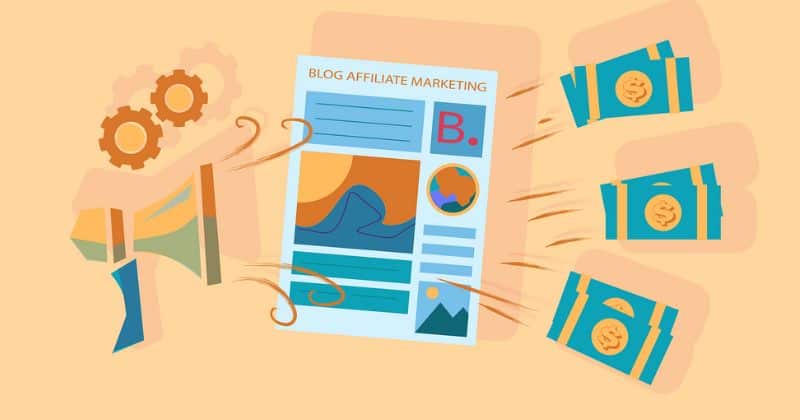
Establishing a clear direction for your blog is crucial to focus your marketing team on what matters most. Defining your blog’s purpose and goals sets the foundation for a successful content marketing strategy. To start, consider the question, “What is the purpose of this blog?” The answer to this question will help you align your effective content marketing strategy with your business’s marketing objectives.
Layout your Content Strategy
Your content strategy can support a variety of objectives, such as increasing or boosting brand awareness and recognition, stimulating lead generation, converting users, engaging past and existing customers, and optimizing search engine rankings. Selecting no more than two or three objectives for your blog marketing strategy to maintain focus on your blog content is a good idea.
A helpful framework for defining your blog’s purpose is the “help-to-buy” framework, which outlines the audience’s specific problem, desired outcome, and means to achieve it. By clearly understanding your blog’s purpose and goals, you’ll be able to create content that resonates with your target audience and drives results.
Identifying Your Target Audience

Knowing your target audience is vital for tailoring your content to their needs and preferences. Target market research is a minor adjustment that can drastically improve the quality of your blog. By researching demographics, interests, and pain points, you can create top-quality content that attracts and retains your target audience.
Create Marketing Personas
One effective way to identify your target audience is by creating marketing personas – hypothetical depictions of your ideal customer. Consider questions like, “What are the characteristics of our ideal customers, and what needs do they have that our product or service can fulfill?”
Once you’ve developed these personas, document a comprehensive overview so your business and blog can benefit from the information as they grow.
Performing Keyword Research and Topic Generation
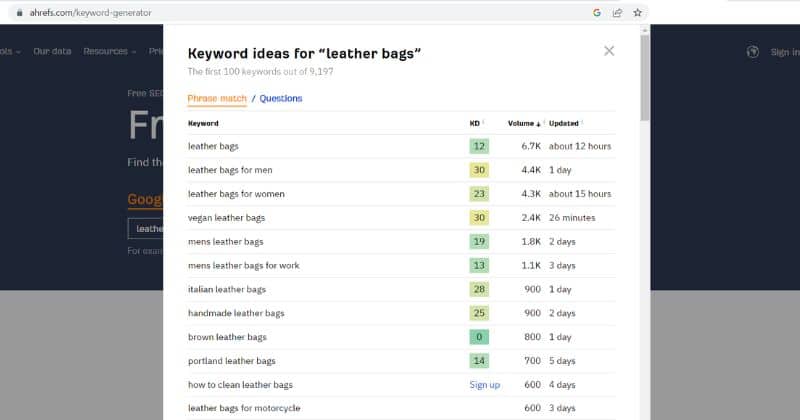
Keyword research and topic generation, among other blog best practices, are crucial components of a successful blog strategy, as they enhance the likelihood of appearing on the search engine results page (SERP) and facilitate customers in locating your blog rather than a competitor’s.
In the following subsections, we’ll explore techniques to find relevant topics and keywords to attract readers.
Seed Keywords and Long-Tail Variations
Seed keywords are broad, general terms relevant to your intended audience. Brainstorming associated topics can help you generate ideas and uncover relevant topics for your blog content. By starting with seed keywords and exploring long-tail variations, you can create a list of potential topics that cater to your target audience’s needs and interests.
Traffic Estimation
When conducting keyword research, it’s important to evaluate the estimated organic traffic of the top-ranking page and identify low-competition keywords. Tools like Ubersuggest, Ahrefs, and Mangools can help you research keywords and find the right balance between search volume and competition.
By incorporating seed keywords and long-tail variations of primary keywords into your content strategy, you can drive more traffic and provide value to your readers.
Analyzing Competitor Content
Competitor research is a priceless source of inspiration for blog content. By doing competitive research and analyzing your competitors’ content, you can identify successful strategies and uncover potential opportunities in the market. Examine the type of content they share, the techniques they’ve implemented, and their ranking for relevant keywords to spot areas where there may be gaps in their content that you can capitalize on.
Tools like Semrush’s Keyword Gap tool can help you discover keywords your competitors are ranking for but you’re not. This enables you to target content topics already proven successful for your competitors.
Utilizing Keyword Tools and Resources
Keyword tools and resources can help you uncover related topics and questions relevant to your target audience and customer journey. Tools like Google Keyword Planner, Keyword Tool, and Ahrefs can assist you in identifying keywords and generating pertinent long-tail keywords for any topic. By using these tools and resources, you can expand your list of topics and cater to the needs and interests of your target customers.
Discover Keyword Opportunities
Another helpful resource is the Keywords Explorer, which lets you discover question-focused keyword ideas by inputting seed keywords and accessing the Matching Terms report. Utilizing these keyword analysis tools and resources ensures your content strategy remains current and relevant to your target audience.
Creating an Editorial Calendar and Content Plan

An editorial calendar and content production plan are essential tools for organizing content assets and providing visibility into the editorial process. The following subsections discuss choosing a planning tool, balancing content types and formats, and adapting to industry changes and trends.
Choosing a Planning Tool
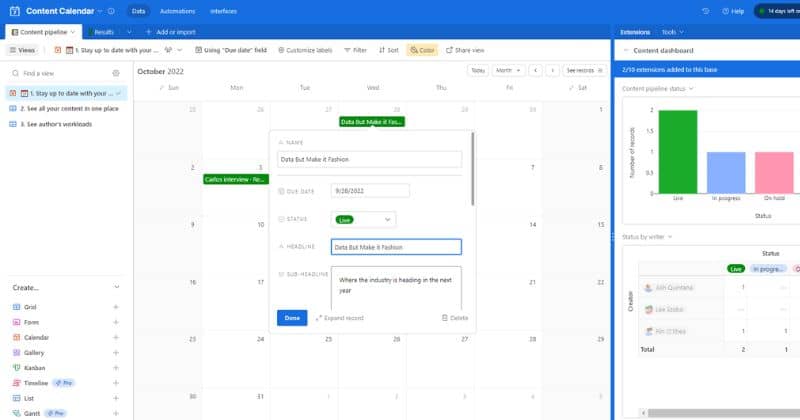
Selecting the right planning tool for your content strategy can greatly enhance your organization and productivity. Popular planning tools include Airtable, Trello, and CoSchedule, each offering unique features and benefits. When choosing a planning tool, consider your content strategy’s specific requirements and objectives.
Planning tools enable you to make instantaneous updates, arrange all content assets, and have comprehensive visibility into who is responsible for what, when each element is due, and which persona and stage of the funnel each content is for.
By choosing the right content planning tool, you can streamline your content creation process and improve the overall efficiency of your content strategy.
Balancing Content Types and Formats
Creating diverse content types and formats is crucial for maintaining reader engagement and optimizing content for different platforms. Consider your target audience’s preferences and the platforms you use to disseminate your content.
Various content types are available, such as blog posts, videos, podcasts, infographics, and more, with corresponding formats including text, audio, video, visual, and interactive formats.
By carefully balancing content types and formats, you can keep your readers engaged and ensure your content remains fresh and interesting. Additionally, optimizing content for various platforms can help you reach a wider audience and maximize the impact of your content marketing efforts.
Adapting to Industry Changes and Trends
In a rapidly evolving digital landscape, staying informed of industry changes and trends is crucial to stay ahead of the competition. Recent developments include rapid digital transformation, sustainability, enhanced customer experience, and the emergence of AI and predictive analytics.
Staying Relevant
By staying abreast of industry changes and trends, you can adapt your content strategy to ensure it remains relevant and effective. This involves producing content tailored to your business value and target audience, utilizing the most advanced tools and technologies, and continuously refining your content ideas and strategy based on feedback and results.
Crafting High-Quality, Engaging Content

Crafting high-quality, engaging content is the cornerstone of a successful blog and essential to creating an impactful blog post. To achieve this, consider exploring various blog post ideas that resonate with your target audience while focusing on creating blog content that truly stands out.
In the following subsections, we’ll discuss developing a unique voice and style, incorporating visuals and multimedia, and optimizing content for SEO and readability.
Developing a Unique Voice and Style
Your blog’s voice and style can set it apart from the competition and create a memorable experience for your readers. To develop a unique voice and style, focus on your personal experiences, values, and beliefs, and consider the tone and language that will resonate with your target audience.
When establishing your blog’s voice and tone, consider elements such as jargon, formality/informality of the writing, level of quirkiness, and use of humor. By cultivating a distinctive voice and style, you’ll create content that stands out and captures your readers’ attention.
Incorporating Visuals and Multimedia
Including visuals and multimedia in your blog content can significantly enhance reader engagement and simplify the comprehension of complex topics. Visual communication, such as images, videos, graphics, and interactive content, can help break up large blocks of text and make your content more visually appealing. Additionally, incorporating visuals can boost the shareability of your social media posts.
Tools like Canva can assist you in creating images for your blog content. By incorporating visuals and multimedia, you can create a more engaging and memorable experience for your readers, ultimately leading to increased traffic and conversions.
Optimizing Content for SEO and Readability
Optimizing your content for SEO and readability is essential for ensuring that your blog ranks higher in search engine results and is easily accessible to readers. To optimize your content, focus on keyword research and topic generation, create content relevant to your target audience, and employ keyword tools and search engine optimization resources.
Add Visuals to Improve Readability
Additionally, ensure your content is well-structured and easy to read using clear headings, subheadings, and short paragraphs. By optimizing your content for SEO and readability, you’ll increase the likelihood of your blog being found by potential customers and provide a better experience for your readers.
Measuring Success and Adjusting Your Strategy
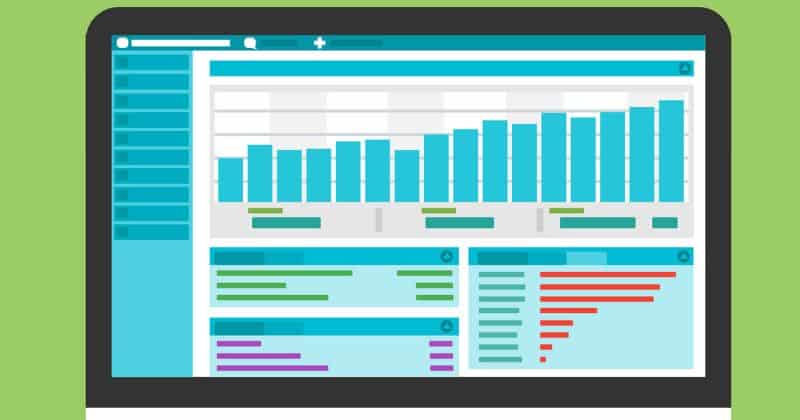
Measuring the success of your blog content strategy is crucial for continuous improvement and growth. In the following subsections, we’ll discuss tracking key performance indicators (KPIs), analyzing traffic and engagement metrics, and iterating and evolving your blog strategy based on feedback and results.
Key Performance Indicators (KPIs)

Key Performance Indicators (KPIs) are quantifiable objectives used to monitor progress toward predetermined objectives and offer valuable insights to assist personnel in the organization in making informed decisions. For a new blog, traffic is the most reasonable KPI to monitor. By tracking KPIs, you can assess the success of your blog content strategy and make necessary adjustments to achieve your goals.
Make Data-driven Decisions
Some KPIs to track include user feedback, such as likes and dislikes, social sharing, conversions, contributed social conversions, last interaction social conversions, channels, campaigns, and blogs.
By monitoring these KPIs, you can gain a comprehensive understanding of the performance of your blog content and make data-driven decisions to improve your blogging strategy.
Analyzing Traffic and Engagement Metrics
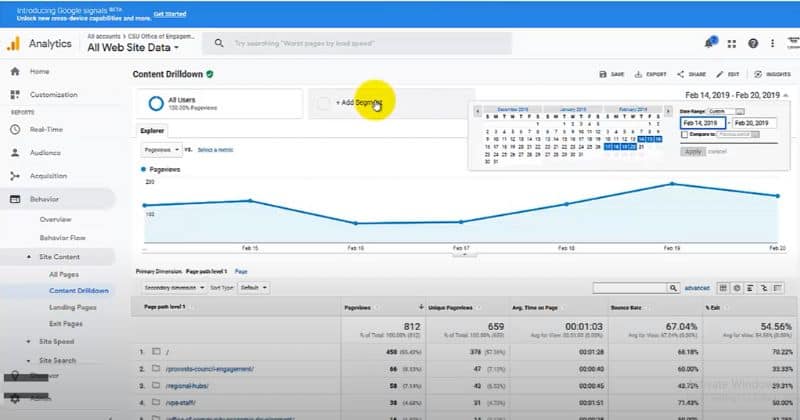
Analyzing traffic and engagement metrics is essential for understanding the performance of your blog content and how it can be improved. Google Analytics is a valuable tool to help you view consumption metrics data in the Behavior > Site Content > Content Drilldown section.
Analyze Page Metrics
By examining metrics such as page views, time on page, and click-through rate, you can gain insights into how your content resonates with your target audience and identify areas for improvement.
This information can be used to refine your content strategy and ensure that your blog remains relevant and engaging to your readers.
Iterating and Evolving Your Strategy

Iterating and evolving your strategy based on feedback and results is crucial for your blog’s continuous improvement and growth. By reviewing channels, campaigns, and blogs to identify and replicate the most successful content, you can ensure that your blog remains current and relevant to your target audience.
Additionally, leveraging Call-to-Action Templates and HubSpot’s CTA creation tool can help you generate relevant CTAs to drive conversions. By continuously refining and optimizing your strategy, you’ll be better equipped to meet the needs of your target audience and achieve your content marketing goals.
Final Thoughts
In conclusion, creating a winning blog content strategy requires a comprehensive understanding of your blog’s purpose and goals, target audience, keyword research, and topic generation. You can set your blog apart from the competition by crafting high-quality, engaging content with a unique voice and style, incorporating visuals and multimedia, and optimizing for SEO and readability.
Remember to measure your success and adjust your blogging strategy accordingly to ensure continuous improvement and growth. By following this step-by-step guide, you’ll be well on your way to creating a successful blog that captivates your audience and drives results.
FAQs
How do you plan a blog content strategy?
Planning a blog content strategy involves identifying your audience, setting clear goals, researching keywords, creating a content calendar, producing high-quality content, and regularly reviewing and updating your strategy based on performance metrics and audience feedback.
What are the 5 major components of a blog?
The five major components of a blog are the title, introduction, body, conclusion, and call to action. The title attracts readers, the introduction provides context, the body delivers the main content, the conclusion summarizes the points, and the call to action encourages reader engagement.
What are the three 3 essential elements of blogging?
The three essential elements of blogging are quality content, consistent posting, and audience engagement. Quality content attracts and retains readers, consistent posting improves SEO ranking, and audience engagement through comments or shares fosters community and increases visibility.
How do I make good content for my blog?
To create good content for your blog, understand your audience’s needs, conduct thorough research, and write engaging, informative posts. Use SEO best practices, including keyword optimization and internal linking. Regularly update content to ensure relevance and accuracy and incorporate multimedia elements for variety.
What does a blog strategy look like?
A blog strategy outlines your goals, target audience, content themes, keyword focus, and posting schedule. It includes a plan for promoting content, engaging with readers, and measuring success through analytics. This strategy is regularly reviewed and adjusted based on performance and audience feedback.
What are the steps of content strategy?
The steps of content strategy include identifying a target audience, defining clear goals, conducting keyword research, creating a content calendar, producing and distributing content, and regularly analyzing and adjusting the strategy based on performance metrics and audience feedback.



